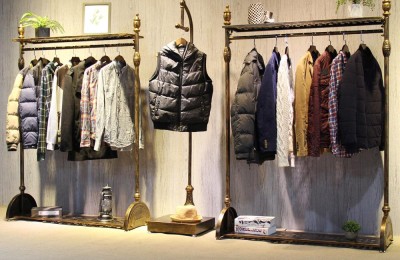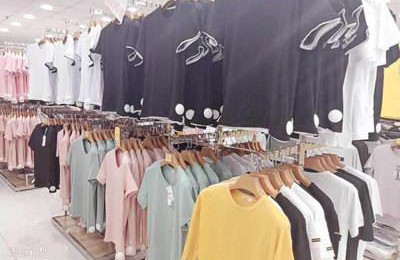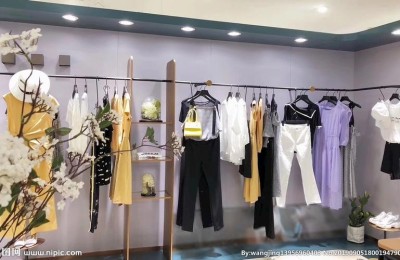Recently, during the interview, the editor felt that everyone was “suffering”, “suffering” to remove inventory, “suffering” to wait for the arrival of the “Golden Nine and Silver Ten”, and “suffering” to get the customer’s payment… All of this happened in the third week of August. There are less than 20 days left before the traditional textile peak season of September, and the market seems to be still weak and difficult to change.
It is a foregone conclusion that this year’s market will not be strong in the peak season and even weaker in the off-season. When high-temperature production restrictions cannot save the increasing inventory, everyone will turn their attention to prices! Will companies cut prices to “recover blood”? The answer is obviously, Yes!
The industry is deeply trapped in the “active destocking” cycle
From an economic point of view, a complete inventory cycle It includes four stages, namely active replenishment, passive replenishment, active destocking and passive destocking, which respectively correspond to the prosperity, recession, depression and recovery stages of the economic cycle.
Data released by us from the National Bureau of Statistics show that the growth rate of finished goods inventory of industrial enterprises continued to fall back to 3.5% in June, while the inventory-to-income ratio in June was 45.0%, which is still much higher than the same period in the past two years, both pointing to inventory pressure. Larger, still to be destocked.
Inventory growth has returned to the downward channel, and the inventory-to-income ratio is still high. Overall industrial enterprises We are still in the active destocking cycle. According to professional analysis, the textile and apparel industry is also in this situation. In the next at least 1-2 months, the industry will still be in an active destocking cycle, making it difficult to enter a passive destocking cycle, and the restocking cycle will be longer.
Although the current upstream raw materials have moved from “active destocking” to “passive destocking”, the midstream weaving industry We are still in the “active destocking” cycle, and the cycle transition speed of the terminal clothing industry is relatively slow. Some garment factories reported that either the order quantity on hand has shrunk, or the early fabrics have not been fully digested, and they are not enthusiastic about purchasing raw materials, which has also led to short-term problems. It is difficult to remove inventory in the domestic fabric market.
Enterprises automatically cut prices to remove inventory
According to sample data monitored by China Silk City Network, the inventory of gray fabrics in Shengze has been maintained at around 42-43 days recently. The recent production limit has not allowed weaving manufacturers to significantly reduce their inventory. At most, it has allowed them to maintain a balance between production and sales. As the market started to pick up, the previously tired inventory did not take the opportunity to eliminate, and new gray fabrics were woven again. Gray cloth started to get tired again. I heard that some large factories in Jiangsu and Zhejiang now have tens of millions of gray fabrics in inventory waiting to be sold. There are many manufacturers who have reduced prices to maintain their inventories at a relatively reasonable position.
Currently, 190T polyester taffeta on the market has fallen below the 1 yuan mark, and the price of 75D chiffon At 3.00 yuan/meter, the price has returned to the level around 2016. Compared with the same period last year, it has dropped by about 30-40%. However, the price of raw materials has not dropped so much, which has resulted in a significant compression of manufacturers’ profit margins.
A simulation in Shengze area Mr. Yang, the person in charge of the silk weaving factory, said: “The market price has been relatively stable recently, but in order to win orders, we will lower our price by 1-2 cents. We hope customers can place orders.”
With pongee spinning Mr. Li, the person in charge of a textile factory that mainly produces products, also said that in the past, when receiving orders, the profit of each loom would be guaranteed to be 50-60 yuan/day. Now, as long as there is a profit of 20 yuan/day, orders will be accepted. In order to Guarantee that the position will not be liquidated during the off-season.
The price of raw materials is extremely unstable. Recently, people have been asking whether the price is very low. Can they buy the bottom? Some people also say that gray fabrics have rebounded sharply in the peak season after reaching low levels in the past. Will it still be the case this time?
Just yesterday (August 14), there was another good news about Sino-US trade relations-1On August 14, 2019, USTR issued the fourth batch of US$300 billion in taxes The adjustment to the list is divided into three parts: about 1% (calculated based on the amount of U.S. imports from China in 2018, the same below) of goods has been excluded due to medical, safety and other reasons; mobile phones, laptops, game consoles, and some toys have been postponed. , computer monitors, some clothes, shoes and hats, etc., the tax date for 59% of the products will be December 15; the tax date for the remaining 40% of the products will still be September 1.
1% of products were excluded and 59% of products were postponed. USTR excluded a total of US$1.45 billion worth of goods, concentrated in commodity categories such as fish (HS03), vehicle parts (HS86), and inorganic chemicals (HS28) (Figure 1). defer taxThe main commodities totaled US$158.3 billion, accounting for 59%, mainly concentrated in motors, electrical equipment and their parts (HS8.5, US$62.5 billion, accounting for 74%), machines, mechanical equipment and their parts (HS84, US$42.5 billion, Accounting for 74%), toys (HS9.5, US$21.9 billion, accounting for 82%), shoes (HS6.4, US$6.7 billion, accounting for 48%) and other product categories. Stimulated by the good news, the raw material market was the first to react, with both volume and price rising. On the other hand, the fabric market behaved relatively rationally. Manufacturers said that Trump’s “face-changing” technology was so proficient that one year later, we are all more… Calm down, take the orders you can take, and give up if you can’t. The key is to manage your own products well. If there is a product, there will be a market. Regarding the market outlook, most of the bosses interviewed said that the fundamentals are still under pressure in the short term.
1. The rebound power of raw materials is insufficient, and the cost of gray fabrics is difficult to bottom out. Nowadays, many customers are more savvy and will not take the initiative to raise prices to suppliers when raw materials rise. However, when raw materials fall, they will immediately negotiate prices with suppliers. This has also led to the difficulty in passing on the cost pressure of gray fabric manufacturers this year and reduced profits. Space is lower. As far as the current raw material market is concerned, although the major raw material manufacturers have absolute say and prices will not fall below, downstream buyers currently lack a “speculative” mentality and the raw material market lacks demand support.
2. Large-capacity projects are still being launched, and market supply will increase in the short term. Since this year, the pace of transferring low-end production capacity out of Jiangsu and Zhejiang has not stopped. Many large companies are even adding new production capacity in units of 1,000 units. According to incomplete statistics, the production capacity of emerging water-jet looms transferred from northern Jiangsu, Anhui, Hubei, Jiangxi and other places has exceeded the 200,000-unit mark, far exceeding the number of water-jet looms eliminated by traditional textile clusters in the Yangtze River Delta region. Therefore, It can be seen that the explosion of gray cloth production capacity is unstoppable.
3. Major clothing brands have released their mid-term reports, and their profit and inventory data are worrying. For example, the 2019 semi-annual performance forecast released by La Chapelle shows that its pre-loss range for the first half of the year is between 440 million yuan and 540 million yuan, a year-on-year decrease of around 300%. At the same time, it frantically closed more than 2,400 offline stores in the first half of the year. From 2014 to 2018, La Chapelle’s inventory rose rapidly, from 1.327 billion yuan to 2.534 billion yuan, and the ratio of inventory to current assets increased from 26.42% to 48.58% during the same period.
When the industry enters the “cyclical off-season”, all links will face a harsh survival of the fittest. After experiencing a slight rise in the market in mid-to-late July, the market has returned to calm. Although the current sampling and small orders of autumn and winter clothing fabrics on the market are better than in the previous period, small and medium-sized batches have become the mainstream of the market, and market orders are also uneven. The current market It seems “ready to move” to raise its head, but it is still far away from the “Golden Nine” in everyone’s mind. </p







